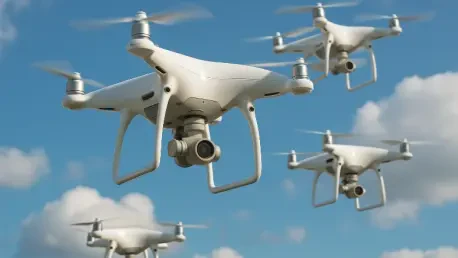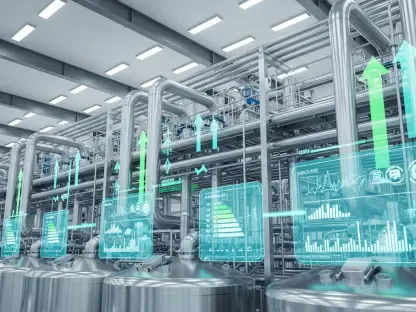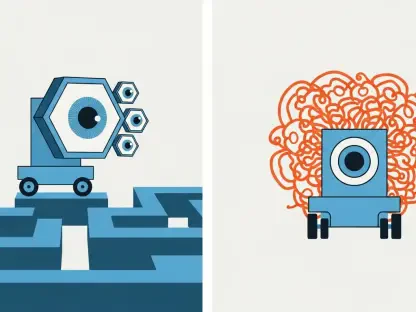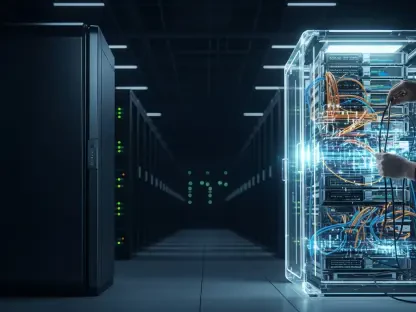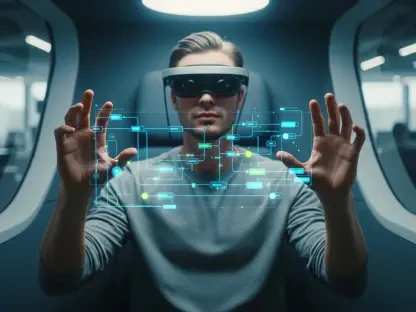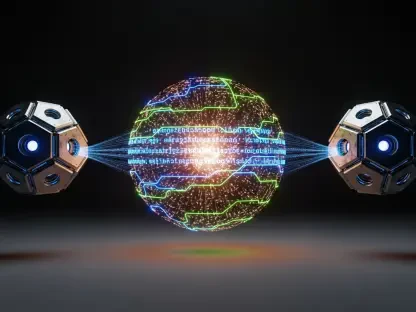As drone technology continues to permeate various sectors, they face the complex task of adapting to unpredictable environments. These challenges range from rapidly changing weather conditions to dynamic obstacles, requiring drones to maintain operational efficiency and reliability. Researchers worldwide are leveraging innovative solutions to tackle these environmental unpredictabilities, integrating advanced machine learning techniques to enhance the drones’ ability to navigate and perform reliably under uncertain conditions. At the forefront of these developments, major institutions like MIT have demonstrated groundbreaking research to improve trajectory control and adaptive responses in autonomous drones, highlighting significant strides toward more consistent and safer drone operations.
Machine Learning and Adaptive Control Systems
Using AI to Improve Drone Trajectory Tracking
Leading universities have been pushing the boundaries by developing adaptive control systems powered by machine learning, profoundly influencing drone operations. These systems are specifically designed to enhance drones’ trajectory tracking capabilities when faced with erratic environmental elements like gusty winds. At the heart of this development lies a novel machine learning-driven approach that minimizes trajectory deviations by dynamically adjusting to environmental forces that challenge precision and accuracy. By encoding learning algorithms that accommodate these obstacles, drones can maintain their intended path, dramatically reducing incidents and enhancing efficiency in applications such as parcel delivery and firefighting.
The pivot from traditional methods to innovative artificial intelligence and machine learning frameworks marks a significant technological leap. This approach allows drones to process environmental data quickly and respond in real-time, a capability pivotal for mission-critical tasks where even minor deviations can lead to significant setbacks. Employing such intelligent control systems provides drones with an enhanced real-time decision-making ability, marking a shift toward more autonomous operations and less human dependency. By developing frameworks where the AI rapidly learns from a compact dataset, MIT researchers have achieved substantial improvements in drone trajectory precision, showcasing the potential for these systems to revolutionize how drones interface with their surroundings.
Meta-Learning for Environment Adaptation
In integrating adaptive AI technologies, the use of meta-learning stands out, providing an exceptional methodological improvement in drones’ response adaptability. Meta-learning, a technique enabling AI systems to learn swiftly from minimal data, empowers drones to adjust effectively to new types of disturbances without explicit prior knowledge of those challenges. The overarching goal of leveraging such technology is to allow drones to autonomously choose the most appropriate optimization algorithm in real-time, improving their capacity to stay the course amid disturbances. The system’s ability to learn from just a few minutes of flight data underscores the practical efficiency and flexibility introduced by these AI methods, swiftly facilitating enhanced autonomy in dynamic settings.
The concept of meta-learning introduces a sophisticated layer to the drones’ control systems where the machines effectively become proactive learners. Through rapid adaptation, drones not only respond to immediate stimuli but also generate predictive models to anticipate future environmental shifts. This proactivity allows them to adjust their operations preemptively, providing a competitive edge in reliability over traditional systems. Essentially, meta-learning transitions the operational paradigm from reactionary to anticipatory, a shift that boosts the drones’ functionality and effectiveness across diverse applications worldwide.
Optimizing Control with Mirror Descent Techniques
Automating Algorithm Selection for Precision
The incorporation of mirror descent techniques in adaptive control systems represents a notable progression in drone technology by automating algorithm selection processes. This methodology enables AI to identify and apply the most suitable optimization response to various disturbances encountered mid-flight. Mirror descent offers a mathematical framework that assists in refining the adaptive mechanisms, enhancing both precision in trajectory control and overall response efficiency. With automation at the core, the adaptive control system optimally navigates disturbances with minimal human input, a requisite for handling unexpected environmental changes in diverse settings.
A critical advantage of the automating selection process is its capacity to integrate geometric data relating to each environmental disturbance. By analyzing these geometric aspects, drones gain a comprehensive understanding of the forces at play, enabling stricter trajectory adherence and fewer deviations while in transit. The resulting precision underlies a substantial reduction in trajectory errors, indicative of the effectiveness of mirror descent techniques within the adaptive framework. As drone applications grow increasingly complex, these technologies ensure operational excellence and reliability, central to expanding drone usage across different sectors and industries.
Reducing Human Input with Neural Network Models
The reduction of human oversight in drone operations introduces a paradigm focused on independent machine learning, aided significantly by neural network models. These models are crucial for approximating new environmental data without relying on explicitly defined parameters or conditions. By adapting in real-time to dynamic changes, the necessity for human operators to feed detailed structural knowledge about disturbances is eliminated, fostering an environment of autonomous operational capability. This autonomy reduces the propensity for human error, a factor essential for safe and efficient drone activities.
Neural networks stand as a cornerstone in the pursuit of minimizing human involvement in drone dispatch and control. Their ability to modify and optimize performance based on continuous environmental feedback enables more adaptable, responsive operations. In drone missions demanding high accuracy, such as search and rescue operations and real-time surveillance, the adoption of neural networks for immediate data processing reinforces the operational reliability and performance. By enhancing the readiness to self-correct and adapt independent of manual intervention, neural networks play a pivotal role in the broader adoption of drones in complex, unpredictable environments.
Real-World Implications of Adaptive Drone Systems
Demonstrating Efficiency in Simulations and Field Testing
The deployment of adaptive control systems has shown compelling results across simulations and practical field testing, demonstrating their superiority over conventional methods. These systems have consistently achieved substantially lower trajectory tracking errors, affirming the technology’s capability to effectively handle variable wind speeds and unpredictable environmental conditions. Real-world testing illuminates the strength of these advanced systems, revealing their potential to standardize operations amidst competing pressures posed by nature and human-made disturbances. The consistent success across these environments provides confidence in the systems’ scalability and applicability in real-life scenarios where reliable operations are paramount.
Within dynamic and challenging conditions, drones equipped with adaptive systems have demonstrated remarkable versatility and dependability. This robustness provides a reproducible model for integrating similar technological solutions into other automated platforms, ultimately spearheading advancements in autonomous navigation capabilities. By continuing to adapt and improve, these systems promise to meet and exceed the intricate demands placed on modern drones, underscoring a new era in automated logistics, surveillance, and disaster response efforts across diverse industries.
Exploring Future Potentials and Applications
As research into adaptive drone systems progresses, there is burgeoning interest in broadening their capabilities to handle multiple simultaneous disturbances. Future endeavors are poised to delve into scenarios involving payload shifts influenced by wind variations and other operational challenges unique to drones. These explorations aim to empower drones with continual learning capacities, enabling enhanced adaptability and problem-solving skills during real-time operations. By developing drones capable of immediately assimilating experience with new disturbances, the technology will continuously improve without necessitating retraining on previously experienced data.
The pursuit of continual learning within drone systems signifies a commitment to elevating drone functionality far beyond its current scope. Encouraging innovations that foster greater resilience in fluctuating environments, this facet of research endeavors to equip drones with more comprehensive skill sets. As technology edges closer to these objectives, the implications for industry and society are substantial, with vast potential to revolutionize drone applications across crucial sectors like healthcare logistics, environmental monitoring, and public safety enhancements. Establishing a foundation where drones can independently navigate complexities promises a future where decisions are more informed, operations more successful, and the integration of autonomous systems into everyday processes more seamless.
Shaping the Future of Autonomous Drones
Leading universities are innovating in the realm of drone operations by harnessing adaptive control systems powered by machine learning. These cutting-edge systems are crafted to enhance how drones track their trajectories, especially when confronted with unpredictable elements like strong winds. Central to this progress is an advanced machine learning approach that efficiently minimizes trajectory deviations. It does so by adjusting dynamically to environmental challenges, maintaining drones on their intended paths. This advancement significantly cuts down on mishaps and boosts efficiency in vital applications, such as delivering parcels and fighting fires.
Shifting from traditional strategies to these novel AI and machine learning frameworks marks a crucial technological advancement. This new approach enables drones to rapidly process environmental data and react in real-time, which is critical for mission-critical tasks. Minor deviations can lead to major issues, so intelligent control systems enhance real-time decision-making, moving drones toward more autonomous operations with reduced human involvement. MIT researchers have demonstrated notable improvements in precision by crafting frameworks where AI quickly learns from small datasets, signifying a major breakthrough in how drones interact with their environments.
